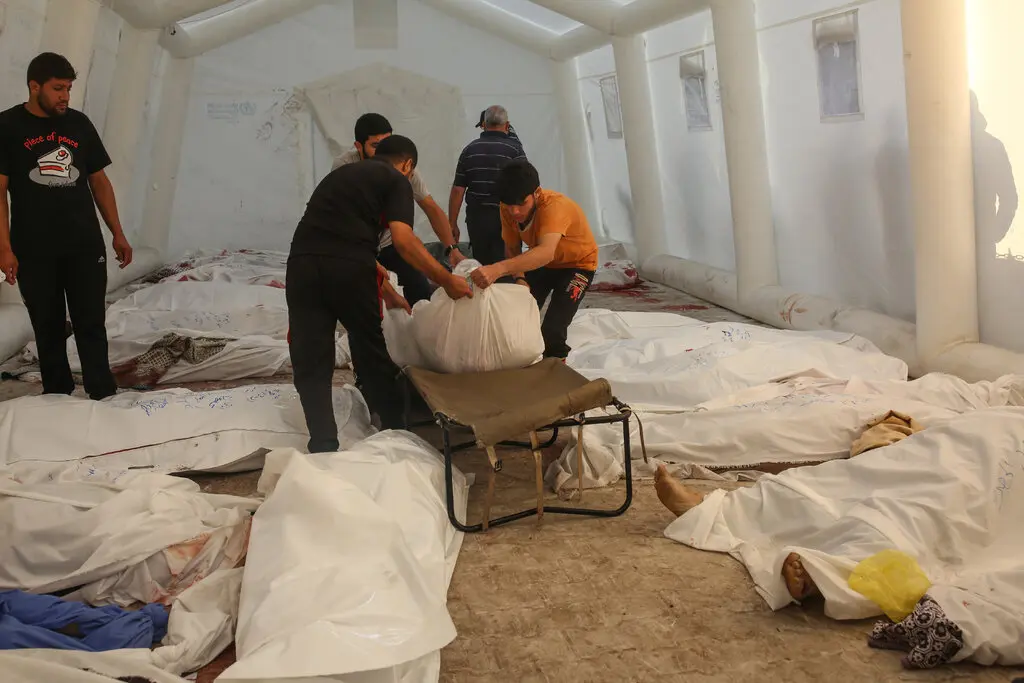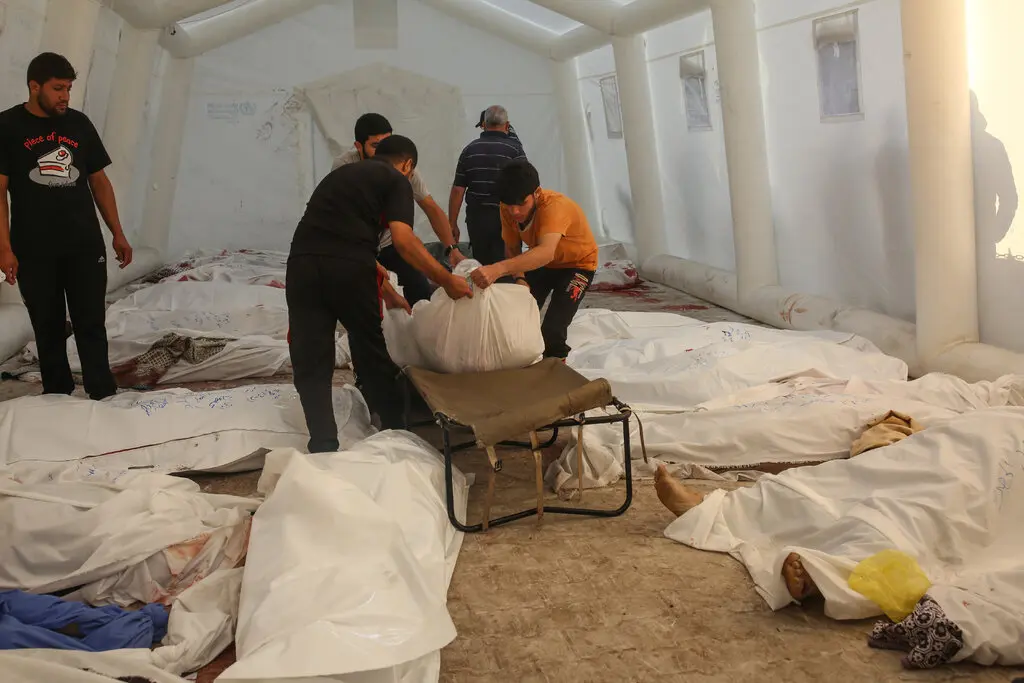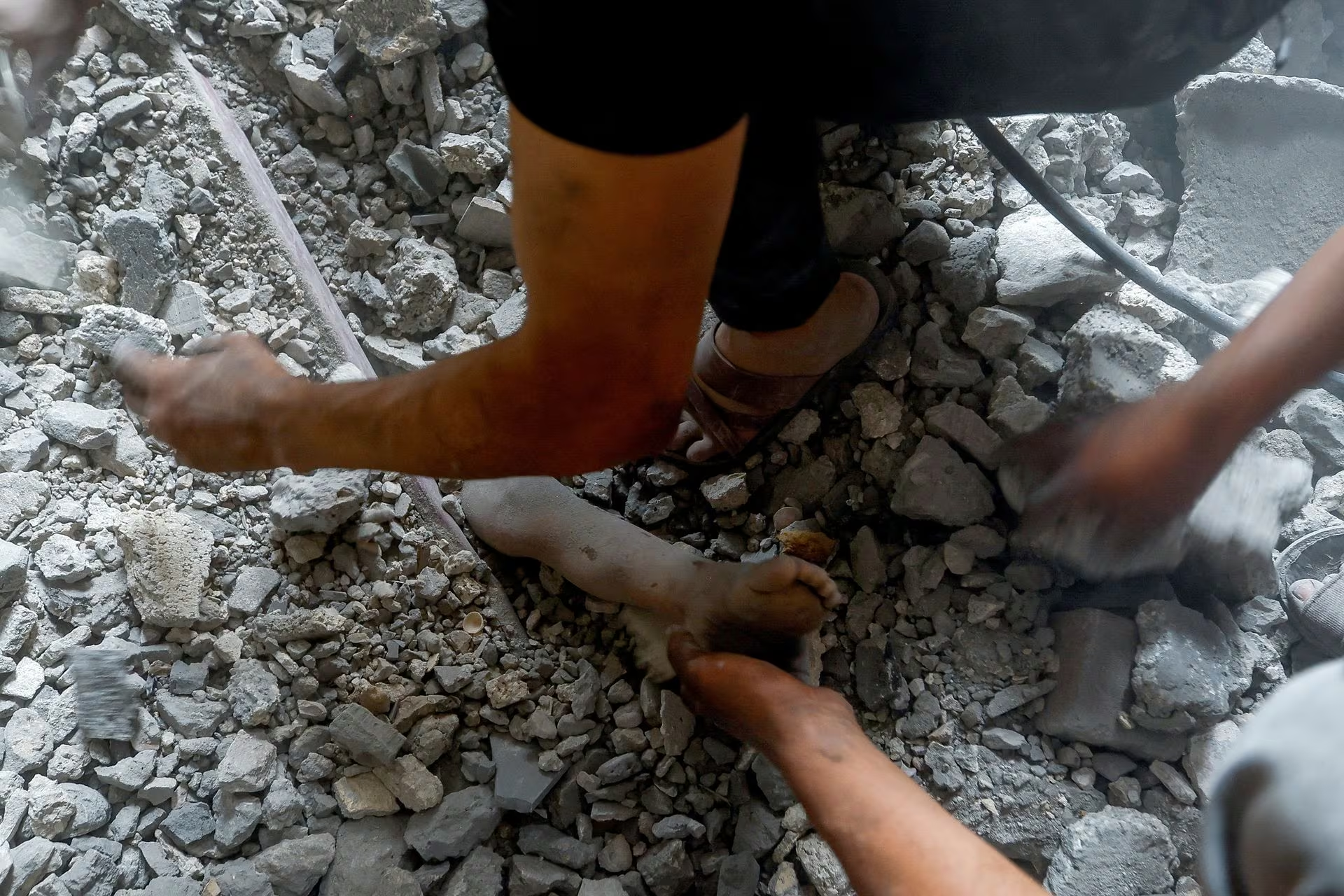Justifying the unjustifiable: "we cannot trust the numbers of Palestinian deaths"
• public
This post is available in French here.
This post is part of a series looking at the arguments used by Israelis and Zionists to justify the current assault on Gaza. Some of these arguments may be used in bad faith by some, especially in the Israeli government and military, but I can say with full certainty that they are genuinely believed by many—including in my family.
Yesterday, I had a difficult conversation with my dad about the war. We hadn't spoken in weeks, and during that chat it was clear that he was gripped with fear—fear at the wave of antisemitic violence around the world and fear that the horrors of October 7th could happen again in Israel, where so many of our relatives and friends live.
I got a little bit emotional during that conversation, and brought up the fact that over 4,000 children had died in Gaza since the beginning of the war. 4,000 children. How could anyone, anywhere justify this? My dad then asked "but how can we trust these numbers, they come from Hamas, right?".
While I disagree with the framing (again, Palestinians are asked to prove their own suffering, to show evidence of their own death), I want to address this head on.
As of this writing, the latest numbers I could find, reported by the BBC, are that 11,240 people, including 4,630 children, have been killed in Gaza since Israel launched the assault on October 7th.
First, it's important to understand why the only source of information we have is the Ministry of Health in Gaza, which is run by the Hamas government. Israel prevents foreign journalists and humanitarian workers from entering Gaza. And even for journalists and humanitarian workers who are in Gaza, the sheer level of violence and destruction makes it incredibly hard to document the number of people who are killed and injured. Lack of electricity and communication outages makes the task even harder.
More generally: this is war, and getting real-time numbers is hard. Even Israel recently revised the number of killed in the October 7th attack from 1,400 to 1,200.
Second, the numbers shared by the Health Ministry in Gaza match with the level of devastation and despair that Palestinians and international observers are reporting. Morgues are overflowing with corpses, hospitals are completely overwhelmed, bodies are constantly brought out from under the rumbles of bombed buildings, and health workers started digging mass graves because there is nowhere to put so many bodies.

PBS reported: "The morgue at Gaza City’s Shifa hospital can only handle some 30 bodies at a time, and workers had to stack corpses three high outside the walk-in cooler and put dozens more, side by side, in the parking lot. Some were placed in a tent, and others were sprawled on the cement, under the sun." That was just during the first week of the war.
Dr Mike Ryan, Director of the Health Emergencies Programme at the World Health Organization, told Reuters last week that figures released by both sides "may not be perfectly accurate on a minute-to-minute basis, but they grossly reflect the level of death and injury on both sides of that conflict."
Omar Shakir, the Israel and Palestine director at Human Rights Watch, said that the numbers provided by the Ministry of Health in Gaza " generally are consistent with what we’re seeing on the ground in recent days. There have been hundreds of airstrikes per day in one of the most densely populated areas of the world. We’ve looked at satellite imagery. We’ve seen the number of buildings, and the numbers that are coming out are in line with what we would expect with what we’re seeing on the ground. So you put all those things together and we’re quite confident in the overall casualty numbers.”
Finally, and perhaps most importantly, the numbers provided by the Ministry of Health in Gaza have been reliable in the past and are considered trustworthy by international organizations, humanitarian groups, and human rights researchers.
That is because in previous wars, when international organizations did their own research after the wars, what they found closely matched the numbers that had been released by the Ministry of Health.
The CBC reported that "UN counts have largely been consistent with the Gaza Health Ministry's in the past, with small discrepancies":
2008 war: The ministry reported 1,440 Palestinians killed; the UN reported 1,385.
2014 war: The ministry reported 2,310 Palestinians killed; the UN reported 2,251.
2021 war: The ministry reported 260 Palestinians killed; the UN reported 256.
The BBC zoomed in on the 2014 war and showed very small discrepancies in the number reported, including by Israel:
The ministry of health said 2,310 Gazans had been killed in 2014, while [Israeli human rights organization] B'Tselem counted 2,185 deaths. The UN said 2,251 Palestinians were killed, including 1,462 civilians and Israel's foreign ministry said the 2014 war killed 2,125 Palestinians.
If the 2014 war provides any lesson, then, it's that the numbers provided by the Ministry of Health are generally accurate.
This is why these numbers are used by UN agencies, the World Health Organization, and countless others. The US State Department, in its annual human rights report, also relies on these numbers. News organizations, from the Washington Post to the New York Times, AP, Reuters, Le Monde, and others, also rely on these numbers.
When the BBC asked the IDF spokesperson why it says that the numbers shouldn't be trusted, the IDF didn't provide any evidence to back up their claim.
It's worth noting that many actually believe that the number of deaths is higher, not lower, than the one reported by the Ministry of Health: "A World Health Organization official said on Friday the agency had received estimates that some 1,000 unidentified bodies were still buried under the rubble in Gaza and not yet included in death tolls. The official did not specify the source."
We would never ask the Israelis who survived or lost family members in the massacres of October 7th to prove their pain, their fear, and show evidence for the death. The evidence was all around. Yet, we find ourselves asking Palestinians to show evidence for every dead child, for every injured woman, for every maimed elderly—even though the evidence is all around. It's as if, like many have said before, Palestinians must audition for our empathy. Our humanity toward them is conditional.

